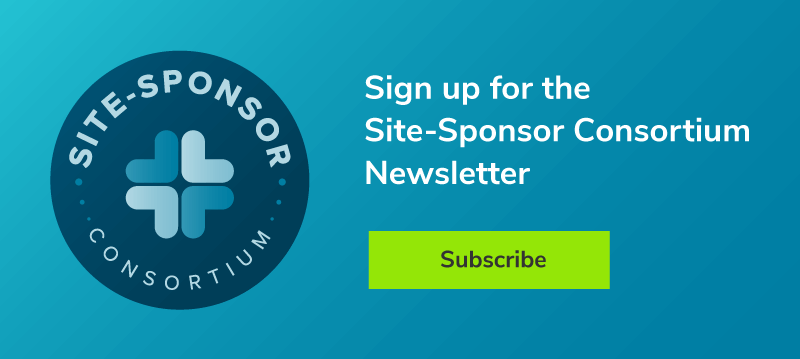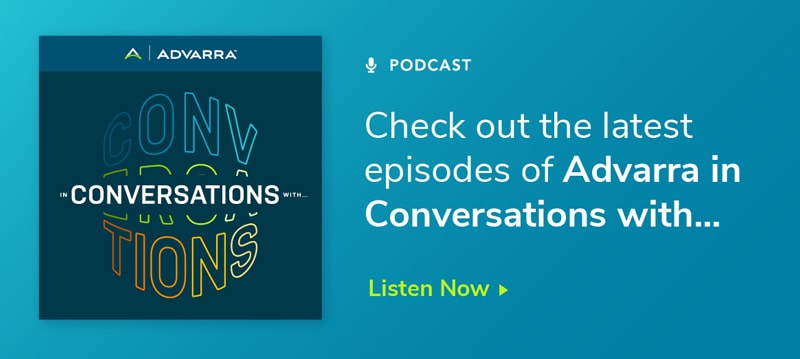A Look at the Processes Behind Clinical Endpoint and Event Adjudication

For more than 20 years, Advarra’s endpoint adjudication committee (EAC) team has seen a lot. Over that time, one key element for successful collaborative engagement with clinical trial sponsors is clear – you need top-level experts, and a good technology-enabled system.
Access to top-level experts is standard for us, as we’ve been carefully cultivating our worldwide network of over 1,500 medical and research professionals over two decades. That said, the expertise in the network is facilitated through the technology system, enabling all those experts around the world to work together efficiently and deliver timely and accurate assessments back to the sponsor. In this blog, we take a closer look at how and why Advarra leverages proprietary, custom, and intelligent technology in our EAC program to move clinical research along safer, smarter, and faster.
What is an EAC/CEC?
In a nutshell, an EAC is an independent group of experts who evaluate clinical trial data to determine if individual participants meet certain endpoints as defined in the protocol. Complex studies often require professional judgment to determine if an event meets the endpoint criteria or if it was caused by underlying medical conditions, comorbidities, or other environmental factors. If you are not familiar with what an endpoint adjudication committee (EAC) (also known as a clinical event committee [CEC]) does and the value it brings to clinical research, read our blog to learn more.
How do EACs/CECs Really Operate?
To understand the important role technology enablement plays in endpoint adjudication, we have to first start with the core activities and functions of an EAC. At a foundational level, EAC members evaluate and issue judgments (i.e., adjudications) regarding medical events occurring in drug and device clinical research. If the adjudicators do not all agree, a formal committee is convened, the members deliberate, and they potentially come to a consensus.
The process sounds easy until you start to consider the myriad types of disparate information necessary to properly evaluate a complex medical event, including information from worldwide sources in any number of languages. To make their determinations, the EAC/CEC members may need the following:
- MRI/CT scans
- Medical photos
- Medical record histories
- Clinic notes
- Defined research metadata elements or other eSource information
Members may also need narrations from the frontline principal investigator (PI) who has seen the participant and can explain the circumstances. Any of those pieces of data may come securely through data feeds originating within multiple systems at the sponsor, clinics, and imaging providers. So it’s important to have a process of identifying datasets, setting secure communication integrations with sponsor systems, and getting the elements into the adjudication platform.
The professional adjudicators need this information organized in a meaningful presentation so they can accurately and rapidly assess an event and provide a judgement using the criteria outlined in the EAC charter. For global trials, the materials must be translated quickly from eSource language into the adjudicator’s language. Adjudicator questions regarding the materials must be curated by the EAC administration team and communicated to the appropriate party. Any updated information received must integrate into the overall adjudication dataset. Adjudicator determinations regarding the event are then securely transmitted back to the sponsor’s platforms, so the clinical trial can continue without interruption or delay.
If the various adjudicators do not come to unanimous consensus after their individual reviews, then the EAC administration team will convene an EAC meeting to deliberate. This involves meeting organization and scheduling, minutes, motions, votes, telepresence systems to connect worldwide members, and incorporating sponsor representatives for the open session discussion. To keep the process organized and efficient, all of this should be managed within the EAC platform, with the adjudication meeting results sent back to the sponsor.
Throughout all of this, the sponsor needs to have appropriately masked dashboard access so they can see the status of the various adjudication events moving through the system in real time, without impacting or influencing the adjudication work being done. The EAC software should also provide various levels of system access and visualization for the different EAC administrator and adjudicator roles.
And to keep things interesting: the EAC must do all of this rapidly in a way without hindering the research progress or putting participants at risk. If it sounds complicated, it’s because it is.
Flexible Platform Allows for Rapid Customization and Validation
There is a common adage in research: “If you have seen one clinical protocol, you’ve seen one clinical protocol.” Each EAC project is unique, and that’s why our adjudication platform needs to be massively flexible to ingest disparate types and sources of metadata. The core platform is validated; we work with the sponsor during charter development to define what elements will be incorporated into the adjudication and what systems house the information.
Once we’ve established the project’s specific needs, our configuration and validation teams work with the sponsor to stand up the various secure connection “pipes.” Some projects require first establishing the secure transfer pipes with the multiple vendors who house the source data. A return pipe exists to place the masked adjudication decision back into the sponsor’s clinical trial management system (CTMS) or similar system. For our strategic partners with existing secure data feeds to their eSource and clinical record keeping systems, we can move rapidly. At the end of the project when closed session records are returned to the sponsor, we may also feed those resulting materials into the sponsor’s electronic trial master file (eTMF) through a secure integration.
Simultaneously, we work directly with our adjudication experts to organize the information presentation and progression and make the adjudication process comprehensive, efficient, and, perhaps most importantly, as easy as possible for the adjudicator to digest the materials and render an opinion. Workflow is also configured depending on the charter and sponsor requirements. Some projects have two adjudicators, some five or more; all need to render a unilateral opinion separate from the other adjudicators.
When meetings are necessary, some projects require unanimous agreement, some are supermajority, and others allow for simple majority. Workflow and adjudication parameters are all unique to each project and defined collaboratively with the sponsor during charter development.
Once it’s been configured specifically to a particular clinical protocol, we then test the platform following our computer system validation policies and procedures for compliance with U.S. Food and Drug Administration (FDA), Part 11, EU Annex 11, and any sponsor requirements. Since each project is based on the same core platform, validation activities typically focus on the secure data transfer and the customized configuration.
It’s complicated, but since our platform is designed to ingest all manner of disparate datasets, we can get new projects set up and through validation in as little as a couple weeks. Advarra also has amazing worldwide technology resources to help set up any necessary secure data transfer pipes with sponsors.
Security and Compliance
In the world of international privacy regulations, your EAC/CEC administrator needs to satisfy an acronym soup of regulations governing the movement and handling of a data subject’s information: GDPR, PIPEDA, HIPAA, CCPA, and more.
The same team who supports Advarra’s global software compliance program also supports our proprietary EAC/CEC platform. We routinely review the international privacy landscape to ensure systems comply with the latest encryption, data governance, data security monitoring, and other associated regulations.
Part of our charter development process involves working with the sponsor to define which regulatory frameworks apply to the data being exchanged, and then applying the appropriate mix of standards. Sometimes that means configuring the secure cloud environment for regional data storage and segmentation. In certain locations, (e.g., EU zone, Israel, China) it may mean verifying the appropriate government filings and local privacy official representative disclosures are completed either by Advarra or the sponsor, so Advarra can be the data processor.
Summary
A truly successful endpoint adjudication technology platform has to work fluently with the study sponsor, EAC/CEC administration team, translators, and most importantly, the adjudicators. It’s not enough to just use basic clinical workflow software or bolt on a module to an existing data management system. To recognize all the benefits of a technology-enabled service, you start with the core service elements and then build the platform around the service and people.
The result of this approach? A compliant, efficient, and successful EAC/CEC service which can spin up new projects quickly and rapidly deliver consistent adjudications from worldwide experts—all while providing the sponsor/CRO full transparency on their adjudication statuses.



